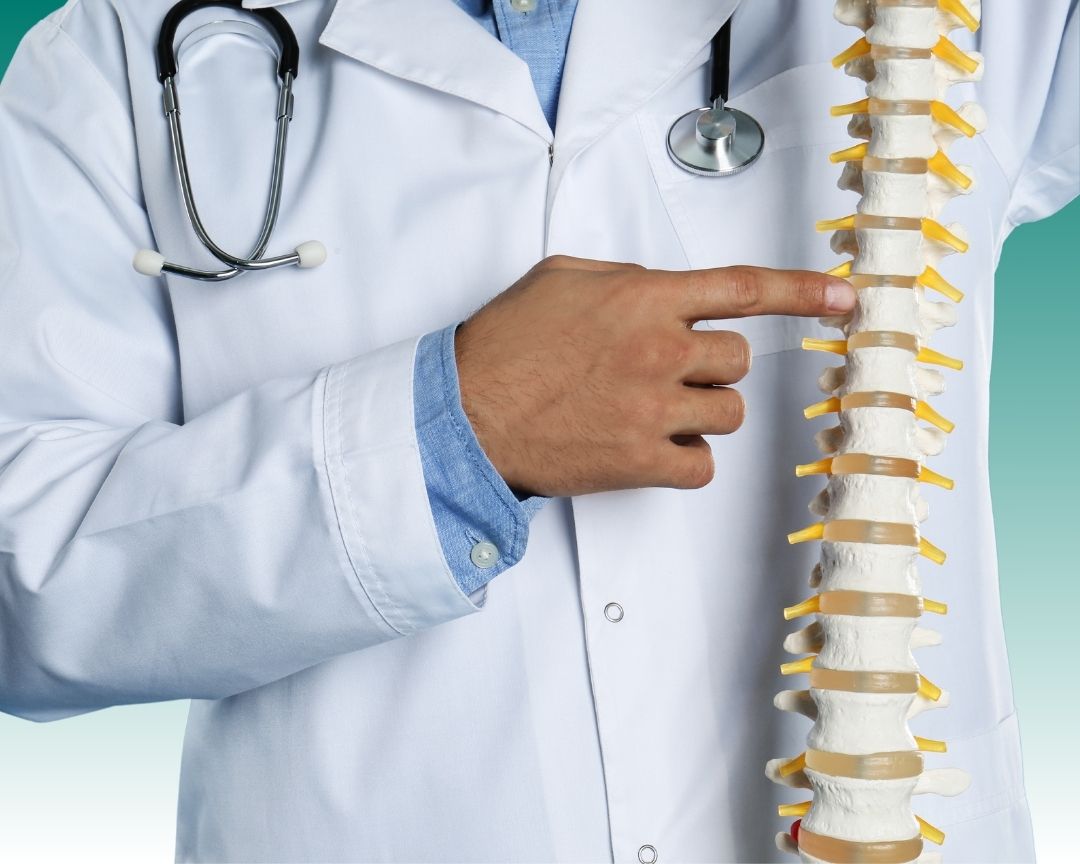How can you tell if you’ll need a Spine Surgery?
If someone presents to us complaining of symptoms related to extremities We almost always recommend to first have an examination by their primary care doctor. If a patient is suffering from neck or low back pain, we’ll usually monitor them for a while and urge them to continue regular, steady physical activity to determine if the problem is resolved. If the problem isn’t resolved with exercise and other over-the-counter remedies or pain management, as well as anti-inflammatory medications the next step should be to visit a physician for an examination.
Many patients suffering from spinal issues are treated without surgery. Physical therapy, exercises at home as well as medication, and frequently spinal injections are suggested prior to contemplating surgery. If the issue isn’t fixed, then surgery may be the best alternative.
For example, if patients experience severe neurogenic pain that is affecting the extremities and non-surgical treatments have failed to provide relief, then surgery is the most effective option. If you have symptoms that are related to the spinal cord or pressure on the nerves, like severe weakness in the leg or arm it is possible to recommend surgery if non-surgical therapy has not worked.
What are the main distinctions between traditional spine surgery and minimally-invasive spine surgery in Turkey?
Open spine surgery traditionally requires the full expose of the anatomy. When we perform minimally invasive spine surgery, we use surgical techniques to expose less of the anatomy, which results in that, in a lot of cases, quicker recovery in the initial few weeks following surgery. In the minimally invasive spinal surgery, we usually use other instruments for surgery, like an intraoperative spine navigation. This gives the surgeon more access to surgical areas that have only a limited amount of access.
No matter if it’s minimally or traditional or traditional, the goal is identical for the longer term; we’d like to see a general improvement in the symptoms or slowing down of degeneration. We would like our procedures to result in fewer blood losses as well as short hospital stays, less incidence of infection and quicker recovery after surgery. Minimally-invasive surgery usually results in a faster recovery for patients. However, it is not for everyone. medical situation is suitable for minimally invasive surgical procedures. It is essential to work together with your spinal surgeon to determine the most effective treatment option for your particular condition.
Surgery is an controlled trauma that is controlled. We aim to maximize the benefits for the patient, while minimizing the impact of the procedure as feasible. We employ the most advanced techniques and technologies for surgery when suitable, and our patients benefit from the academic research of our surgeons to advance advanced and minimally invasive spine surgery procedures.
What kind of ailments are treated in Soraca Med?
We deal with the whole range of spinal problems that range from sciatica to cervical radiculopathy, to more complex spine and brain cancers. Patients also visit us for problems caused by Scoliosis (curvature of the spinal column) as well as degenerative disc diseases (arthritis in the spinal column) and those with spinal stability issues that cause neck or back pain that is and leg or arm pain.
Additionally, we help those suffering from back and neck injury, spinal deformities spinal disorders that are congenital herniated discs sciatica and stenosis.
What qualities should you be looking for in a reputable Spine Surgery in Turkey ?
A skilled spine surgeon is committed to providing excellent providing excellent patient care and results and is prepared to explore new methods and techniques, while also gaining experience on the standard methods and approaches. A spine surgery must also be a skilled communicator who will take time explaining the reasons for their surgery, as well as the options for treatment they provide.
What is it that makes Penn an exceptional area is that because of its collaborative character when someone wants to visit the surgeon of their choice, and they don’t feel like the ideal one for them we are able to reach out across our vast network to locate the right surgeon for the patient. With such a wide knowledge base that we can always locate a the perfect match for every patient.
What types of Spine Surgery are available in Turkey ?
The SoracaMed offers an array of minimally-invasive and traditional surgical options for treating the spine.
The most well-known spine surgery procedures we offer include microdiscectomy, laminectomy, and the traditional lumbar fusion. Laminectomy can be used in order to relieve spinal stenosis and pressure on nerves in the lower back. It involves making an incision at the rear of the spine surgery which allows the surgeon to take out bone spurs and ligaments that are thickened which are putting pressure on the nerves of the lower back.
Microdiscectomy is a procedure used to relieve discomfort in the nerve (sciatica) caused by an impinging herniated disc nerve that runs through the spine surgery. The procedure involves making small cuts in the lower back. The surgeon will then be able to identify and eliminate the herniated disc pressing the nerve.
Traditional spinal fusions are utilized to treat deformity in the spinal column, such as scoliosis discs that are degenerated to the point of being unable to function or the combination of these conditions. Fusions involve using bone taken from the body of the patient to join one vertebra to another. Instrumentation for the spine (pedicle screws) are inserted into vertebrae to support the motion segment as well as assist in the process of fusion.
A few of the most popular procedures that we offer are Lateral Lumbar Interbody Fusion (LLIF) and Minimally Invasive Transforaminal Lumbar Interbody Fusion (MIS TLIF) and percutaneous instrumentation.
LLIF is a fusion in which the surgeon creates small cuts on the side of the patient, underneath their ribs, in order to reach the spine in an lateral direction. This enables the surgeon to carry out the spinal fusion without damaging the spinal muscles.
The LLIF procedure can be followed by a different procedure that is quite common, percutaneous instrumentation of spine. The surgeon inserts screws and rods between muscle fibers typically with the aid of intraoperative X-rays and computer navigation instead of removing the muscle from the spinal column like is typical in surgical spinal fusion. If possible, we try to use a minimally-invasive procedure, if the best option.
Why should you select to go with SoracaMed ?
We are committed to helping patients with their surgical opinions. When surgery is not required we can help patients navigate other options that are appropriate by connecting them to the right spine specialist for their particular issue.
Our physicians are publishing studies and teaching the courses that other doctors across the world are learning from and we are often the first to undergo innovative spine procedures and instruct the other physicians how to do these procedures. Patients who choose Penn receive an integrated team approach. They get access to the entire range of services provided by our surgeons and doctors who are leaders in the field of quality improvement and risk reduction (reducing the risk to patients).
Our spine team is equipped to address any spine problem from the simplest to the complex in a seamless manner, and all within the same health system.
What are the risks of surgery?
Many of the risks of spinal surgery are the same as risks for other procedures:
- Bleeding
- Infection
- General anesthesia risks
How does the doctor determine if I need open surgery or if minimally invasive surgery will be my best option?
Generally, surgeons will always choose the least invasive method possible for a surgery. However, not all surgeries — and not all spinal injuries — allow for a minimally invasive approach.
Talk to your surgeon about their preferred method of performing the surgery, and ask specifically if a minimally invasive approach is possible.
How soon after surgery will I feel better?
Depending on the type of surgery you have, you may feel better almost immediately. Or, it could take months before you have complete relief.
The speed of your recovery depends on the:
- Type of your surgery
- Surgeon’s approach to your spine
- Amount of damage to your spine.
Talk to your doctor about realistic expectations for recovery.
Will pain medication be necessary following surgery?
Following your surgery, you and your surgeon can discuss the most effective pain medication for you. A multimodal approach may include options such as:
- Hot and cold packs
- Patient-controlled analgesia — a pump that gives you a dose of pain medicine when you need it
- Relaxation techniques
- Transcutaneous electrical nerve stimulation — uses small electrical impulses to block pain signals from certain nerves to the brain
What lifestyle changes will I need to make during recovery?
As you recover from spinal surgery, your doctor may recommend:
Wearing a back brace
Not lifting heavy objects
Avoiding bending at the waist
To consult with a physical therapist as you reintroduce exercise into your routine




